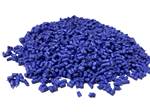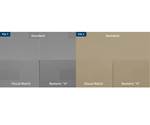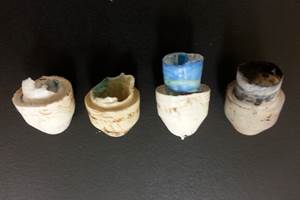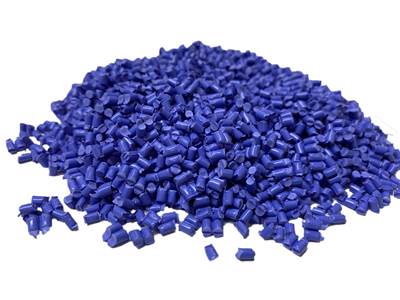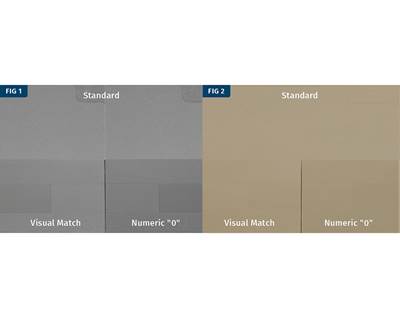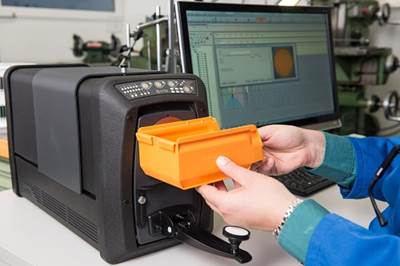Get Color Right With Digital Control
Here’s a guide for compounders, color houses, and processors to overcome unreliable visual color analysis and eliminate unproductive and costly results.
Getting color right for products and materials is essential throughout the plastics industry. This is partly because consumers associate color consistency with high-quality goods. Color can trigger emotional responses in potential customers and even improve the safety and usability of products and environments.
While many in this multi-faceted industry already recognize the value of consistent color, it can be surprisingly challenging to achieve accurate, reproducible color matches consistently. Color problems can lead to unnecessary production expenses and delays, and are most often linked to the unreliability of visual analysis because human color perception is simply subjective.
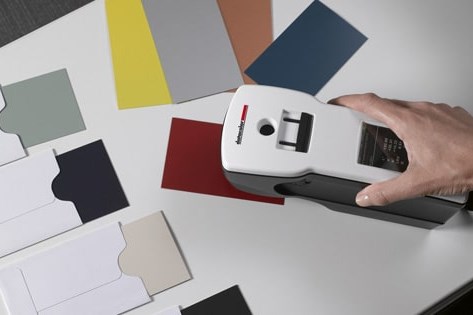
Color perception varies between individuals; properly calibrated instruments provide an objective measure that different observers can agree on.
That’s where digital color management comes into the equation. Compounders, color houses, and processors can overcome this unreliability with the help of proper color-management tools, software and processes.
It is important to understand the science of how we see color because color perception varies between individuals. This starts with photoreceptor cells in the retina that transmit signals to the brain. Rods enable sight at low light levels, but only in shades of gray. Color perception requires brighter light and cone cells, which respond to three different wavelengths:
▪ Short Wavelengths: Blue spectrum (absorption peak ~ 445 nm)
▪ Medium Wavelengths: Green spectrum (absorption peak ~535 nm)
▪ Long Wavelengths: Red spectrum (absorption peak ~ 565 nm)
The color ultimately perceived by an individual depends upon how the viewed object absorbs and reflects these wavelengths. Humans can only see a portion of the electromagnetic spectrum – from approximately 400 nm to 700 nm. And, while a group of individuals without any vision impairment can generally agree with each other on the wavelengths that define basic colors, matching colors comes with an element of uncertainty. The naked eye often isn’t reliable for subtle color matching or quality control. In fact, visual evaluation can be influenced by factors that are both physical—light source, background, altitude and noise, and physiological--age, medication, memory and mood.
Color problems can lead to unnecessary production expenses and delays, and are most often linked to the unreliability of visual analysis.
This is why the plastics industry has come to rely upon mathematical equations and formulas to specify colors within a defined color space (e.g., CIELAB, CIE2000 and CMC). Objective color-management devices—such as colorimeters, spectrophotometers, and QC and formulation software—are used to ensure accurate color measurements and subsequent matching.
Key Color Considerations
This industry’s multifaceted nature, coupled with the wide range of materials used, make color management considerations especially complex. The physical characteristics of plastics only increase these challenges, with end products ranging from opaque or transparent to matte or high gloss and smooth or textured.
In addition, the longevity and use of these materials can impact color formulations. For example, consider outdoor furniture. The longevity of the plastics used to make such products, combined with the requisite physical properties for maintaining color fastness due to extended exposure to sunlight and the elements, can limit the gamut of usable pigments for this product, which in turn impacts the color formulations available to achieve color matches within tolerance.
Another consideration is the need to match plastics with other materials, which adds a new layer of material properties that need to be taken into account to achieve a color match. For example, in athletic footwear, the color of plastics components must match textile elements in order to achieve a cohesive and visually appealing end product.
Selecting the Right Technology
When managing color for plastics, selecting the right technology for your needs is a good start. Each of the two major categories of color-measurement equipment has their own value and can service different needs:
▪ Colorimeters: These are tristimulus color-measurement tools that simulate how the human eye perceives color.
▪ Spectrophotometers: These are full-spectrum color-measurement instruments that generate color data beyond observation by the human eye. Higher-end, hyperspectral spectrophotometers can also measure textured and multicolored materials, in addition to extremely small parts.
Where and how you will use this equipment is yet another important consideration. For those that need the flexibility to measure color in the field or on the go, portable versions will be preferable to stationary systems. Ultra-portable color-matching devices have recently been introduced to the field and can be integrated to support quality-control processes via instant pass/fail readings of production-line samples.
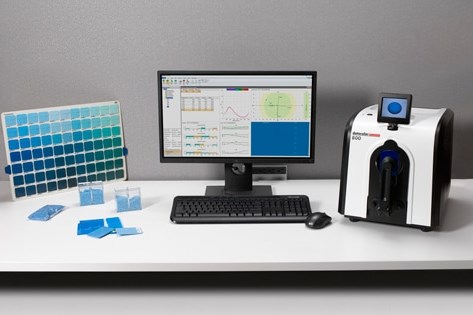
Color-measurement equipment with a high inter-instrument agreement (IIA) ensures that multiple instruments in the same or different locations will “read” the same color within a small Delta E.
For those with multiple instruments that need to communicate across the supply chain, it is essential to have equipment with high inter-instrument agreement (IIA). IIA refers to how closely two or more color-measurement instruments of similar models read the same color. IIA helps to ensure consistent colors across products, materials and locations.
When selecting equipment, look for a “close-tolerance” spectrophotometer.
Instruments with high IIA will offer small Delta E tolerances. Delta E is the expected degree of color difference from one color measurement to another. Delta E tolerances can be set based on factors like color, material and intended application.
When selecting equipment, look for a “close-tolerance” spectrophotometer. This designation is reserved for precision instruments manufactured to the highest quality standards and that have the best IIA. It only applies to instruments with very low maximum allowable variance compared with a master instrument, based on international standards.
Maintenance & Measurement Optimization
With the right technology in hand, you need to ensure you are implementing best practices for maintenance and measurement techniques.
▪ Proper environmental conditions are essential for ensuring consistent and accurate measurements. Start by maintaining an appropriate storage temperature with a stable, non-condensing humidity, and ensure the system is not positioned in direct sunlight.
▪ Establish and maintain a proper maintenance schedule for color-management technology. Companies should regularly clean calibration tiles, calibrate machines at the start of each shift or before a reading, and follow a standardized color-measurement process.
▪ It’s also important to be aware of the temperature of a product before taking a reading. Because of thermochromism, the color properties of nearly all pigments and dyes change with temperature. So, if there is a change in temperature, remeasure standards before measuring production samples.
Determining the Right Recipe & Achieving Matches
Once color readings are captured, manufacturers must develop color formulas that are within tolerance. Pigment-matching software helps users create default recipes and custom blends based upon defined parameters. However, it is important to consider customer needs when selecting between available pigments to ensure they will meet end goals, including cost considerations, lightfastness, weather resistance, and food-contact safety.
One benefit of color-management software is that it can let you know in advance if a target cannot be matched, saving time and resources. If this happens, the software uses gamut mapping to adjust ingredients to determine the colorant combinations that will achieve the desired results.
Consider customer needs when selecting between available pigments to ensure they will meet end goals.
In the event that a pigment becomes unavailable, the software can help to quickly and efficiently reformulate color recipes. This is particularly important if a material becomes scarce or more costly. Also, there is a trend in the industry in which certain pigments and colorants are being phased out due to environmental considerations and heavy-metal content, which could necessitate a color reformulation.
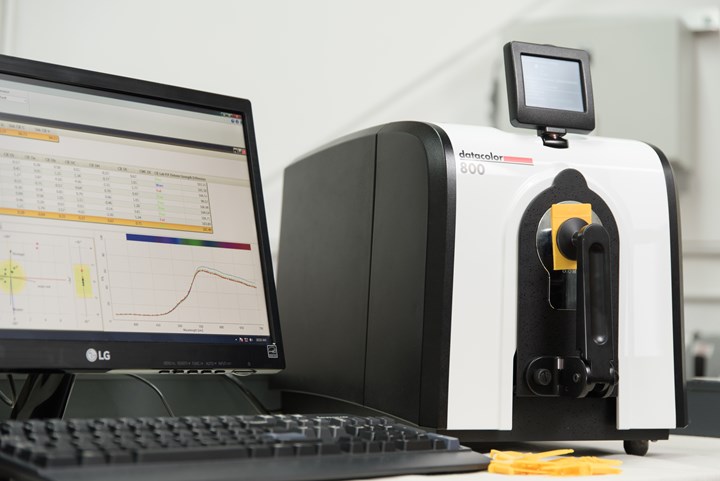
An instrument may “see” two samples as mathematically the same color, but the human eye can perceive them as different due to gloss variations.
When developing color formulas, one also needs to consider how external factors may impact color appearance. Take gloss, for example. Two items can be mathematically described as being the same color by a spectrophotometer, but to the human eye they can appear to be completely different due to differing gloss levels. Advanced software is required to adjust measurements in order to compensate for gloss variations.
ABOUT THE AUTHOR: Earl Balthazar is a senior applications engineer and has been with Datacolor team for more than 15 years. He is a color technologist with a background in color science, human color perception and industrial applications of color, and has experience as a color matcher, lab manager and tech-service specialist. Balthazar sits on the board of directors for SPE’s Color and Appearance Div., of which he has been a member for nearly 20 years. Contact: ebalthazar@datacolor.com; datacolor.com.
Related Content
Updated Controller for Sealed Gravimetric Liquid Color and Additives System
NPE2024: Riverdale Global’s new RGS controller features and intuitive set-up procedure.
Read MoreHow to Start a Hot-Runner Mold That Has No Tip Insulators
Here's a method to assist with efficient dark-to-light color changes on hot-runner systems that are hot-tipped.
Read MoreTechmer Buys Advanced Color Technologies
Deal will expand Techmer’s in colorants and additives in synthetic fibers.
Read MoreReduce Downtime and Scrap in the Blown Film Industry
The blown film sector now benefits from a tailored solution developed by Chem-Trend to preserve integrity of the bubble.
Read MoreRead Next
New to Using Color Concentrates? Follow These Tips to Improve Results
With a focus on highly loaded color concentrates, here is a guide for processors of rigid packaging and building products on how to specify the appropriate colorant for these applications.
Read MoreFive Effective Ways to Control Color
A 50-year veteran in color-concentrate production and use shares practices to help you make better color decisions and generate less scrap. To specify color correctly and communicate your specs to your color supplier requires understanding of the “Five U’s.”
Read MoreAddressing Color Management Issues
X-Rite is tackling a variety of issue in color management in its new blog.
Read More
